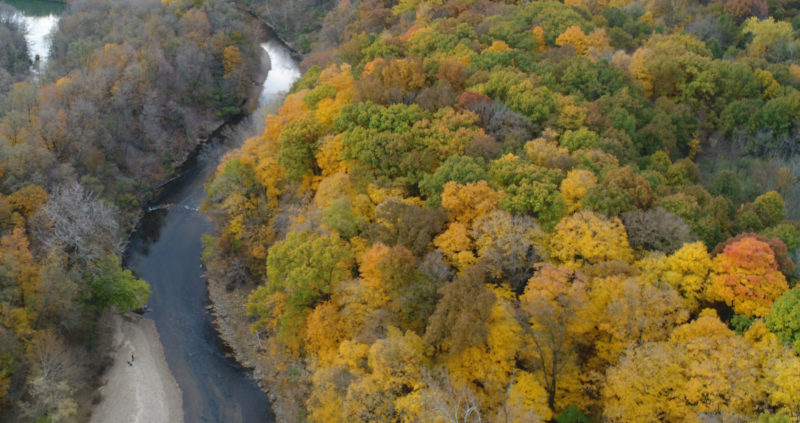Last June, we locked in a victory for the beloved Middle Fork of the Vermilion River that was years in the making. Dynegy and the state of Illinois agreed to a settlement that, among other things, requires Dynegy to move their coal ash from the banks of the Middle Fork to a new on-site landfill. Here are a few highlights from the settlement:
- Dynegy will demolish their shuttered power plant and build a new landfill in the footprint of the former power plant.
- Through Illinois’s coal ash rules, Dynegy will propose to remove their coal ash from the banks of the Middle Fork and place it in the new landfill.
- Dynegy will take action to mitigate the ongoing impact of the coal ash by constructing a groundwater trench to intercept the seeps before they reach the Middle Fork, and begin extensive erosion monitoring to ensure a collapse does not occur before the coal ash can be removed.
- Dynegy will provide $400,000 for beneficial projects in the area, and $100,000 in civil penalties.
We’ve been talking about the need for the removal of coal ash from the Middle Fork for over a decade! Today, we’d like to dig into the beneficial projects and what those mean for the area. Skip to the bottom of the article for an update on removal.

Reforestation of the Middle Fork Corridor
$200,000 of the funding for beneficial projects goes to the Illinois Department of Natural Resources for planting native riparian vegetation, particularly the planting of hardwood forest. Riparian forests (ie. trees along a river) provide critical ecosystem services like river bank stabilization, water quality improvement, wildlife habitat, and carbon sequestration. The shaded canopy of a riparian forest is also critical in regulating water temperature, which is beneficial for aquatic organisms. The Middle Fork is designated as a National Scenic River for the purpose of preserving and restoring these natural features. The Middle Fork of the Vermilion River Corridor Management Plan, created in 1992, describes the natural habitat features that should guide future restoration efforts. Those familiar with their tree species might imagine the oak forest setting described in the plan:
The forests are dominated by white and black oaks, but there are also American beech and flowering dogwood which reach their range limits at the Middle Fork River. The site supports an unusual mixture of forest trees ranging from swamp white oak in wet depressions to black oak, shagbark hickory, and shingle oak in adjacent dry areas. Black haw, hazelnut and arrow wood are the common shrubs. The bottomland forests consist of true forested floodplain and wooded sloughs. These areas support silver maple,walnut, black ash, and sycamore. The sycamores and maples often serve as den trees for small mammals, woodpeckers, and owls.
Kennekuk County Park Beneficial Project
The remaining $200,000 goes to the Vermilion County Conservation District, which manages Kennekuk County Park and a substantial portion of the designated Middle Fork Corridor. The District has decided to use the funds to construct a solar array to power the administrative building and the education center. While this is not an ecological project, PRN is pleased with this project as it aligns with our values overall, and the solar energy will reduce the District’s energy costs and also reduce its greenhouse gas footprint. The District is also using the funds on an electric vehicle charger for the buildings.
Coal Ash Removal Progress Update
The settlement requires Dynegy to remove the coal ash and store it in a new onsite landfill. However, that plan still has to follow the same rules and regulations as every other coal ash pond in Illinois. In February 2022, Dynegy submitted a coal ash removal plan to the Illinois EPA. That plan is still under review. The Illinois EPA did move forward on a water discharge permit (NPDES permit) for the site, and that permit was approved late last year, which hopefully indicates that we’ll see movement on the closure plan soon. The next step in the process is a public comment period which will provide the public its first chance to officially comment on the plan for closure. You’ll hear from us when that time comes. We hope it’s soon.
While we are confident that the Middle Fork is headed in the right direction, this process will take years to complete. Taking two years to review a permit is too long, particularly when the permit is the result of a state-negotiated settlement.. The Illinois EPA needs to move forward with this permit approval. Dynegy needs to, finally, move its ash.







